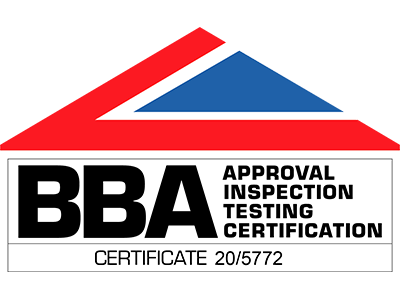How Commercial Roof Coating Products Are Developed
When it comes to developing commercial roof coating products, expert technicians are continually working on improvements to adhesion, UV resistance and user application. Following on from our previous blog, How We Test Our Coating Products, this time we explore the ethos and design principles behind the development of our new coatings.
As with most products, Roofcoat systems were developed to solve a problem. Technicians are leading cladding experts, many of whom have been developing coatings for warranty work since the days of British Steel. Originally, silicone was used in the products developed to help to deal with the problem British Steel had with cut-edge corrosion. But due to the various issues surrounding silicone, developments were made to roof coatings to cope with the movement of metal roof sheets and the Giromax® Roofcoating system was born.
Environmental factors for roof coatings
Since the beginning, developing roof-coating products that are less harmful to our environment has always been a key factor in the design process. Our solvent-less products have been developed to compete in a highly competitive marketplace. Giromax® roof coatings have been designed to release fewer polluting Volatile Organic Compounds (VOCs) into the environment.
The products have been designed to include less leachable content, allowing the rain to run off roof systems with materials staying within the coatings. We also use more environmentally friendly stabilisers in our coatings, which minimises health and safety concerns for the product and the user.
Our coatings have low heavy metal content and low isocyanates, often used in 2-pack PU coating products, which can affect the health of workers if exposed. When compared with other roof-coating products on the market, our coatings contain 87% paint compared to the solid content of a silicone-based paint which averages 60%. The majority of our products contain less solvents than our competitor products.
Better adhesion
When products are developed, one of our main focuses is on adhesion. High levels of flexibility are built into our roof-coating systems to cope with different weather conditions and temperatures. Roof systems are exposed to greater windchill and lower temperatures than at ground level, and they need to be resilient to sun, storms, snow and ice.
Some roofing systems also require regular maintenance, including access to vents and air conditioning units, so footfall has to be taken into consideration. Our products have been designed to be highly durable, tolerant and able to withstand years of wear and tear.
Better UV Resistance
As well as exposure to sun and dry conditions, the impact of hot sunshine on a rain-soaked roof can create a very aggressive environment requiring specific paint technology. Our coatings have been developed to include a waterproof membrane to minimise surface degradation and colour fading technology.
Better user application
One of the challenges in today’s working environment is the need for products to be as user friendly as possible. Roof-coating jobs can easily be disrupted due to weather conditions. One of the key design principles has always focused on the ability to apply our roof coatings in damp conditions. Due to climate change, the British weather is becoming increasingly volatile, and we are aware of the growing challenge this poses to roof contractors.
Fewer days for workers to be able to apply a roof-coating product leads to jobs taking longer and time equals money. As our roof-coatings can be applied in wet weather, this solves the problem of wasted time and costs. But as the British weather has always been changeable, technicians have spent decades developing roof coatings to withstand extreme conditions.
18 months of product testing
It’s important that we have full confidence in our products before launching into the market. When new and improved coatings are developed for better adhesion, better flexibility and better UV resistance, they are rigorously tested for 18 months. This includes a continuous test cycle of 2,000 – 3,000 hours. After which tests continue for 15,000 hours or more to ensure we have achieved maximum durability for the product.
ASTM approved QUV accelerated weather testing cabinet are used and different thicknesses of films are also tested to see how they react to varying conditions. Read more about our testing process…
When it comes to developing roof coating products, we are the market leaders. Our technical expertise allows us to continually test and improve our product range. Our aim is to provide contractors with flexible, durable and long-lasting commercial roof coating solutions.
If you need application guidance or advice about any of our products, please speak to the Giromax team or call 01455 558969 today.
Get updates from us
Sign up to our newsletter to receive all the latest news and insights from Giromax Technology.
Subscribe to NewsletterRelated articles
5 Reasons why Dilapidation Surveys are Important
Dilapidation surveys protecting your roof investment, ensuring compliance and safety standards, and accurate repair and maintenance planning.
5 Common Cladding Issues and How to Fix Them
Common cladding issues include cracking and structural damage, water ingress and moisture-related problems. We explore ways to fix cladding.
5 Commercial Roofing Industry Trends & Innovations in 2025
The latest commercial roofing industry trends include smart roofing technology, IoT, sustainable roofing solutions and advanced roof coatings…









